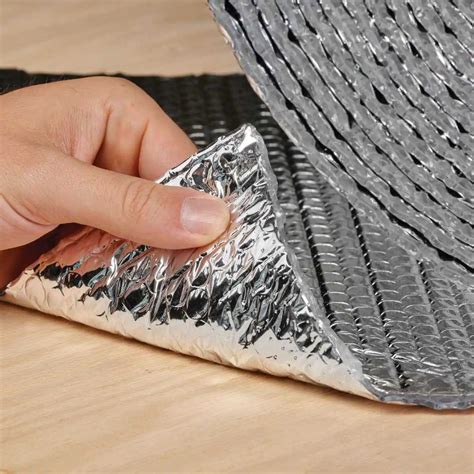Insulation foil is a crucial component in building construction, serving as a barrier against heat, cold, and moisture. However, its placement - either on the inside or outside of the building envelope - can significantly impact its effectiveness and overall building performance. In this article, we will explore the five key considerations to help you decide whether to install insulation foil on the inside or outside of your building.
The importance of insulation foil cannot be overstated. It helps to reduce heat transfer, minimize energy consumption, and prevent moisture-related issues such as mold and condensation. However, the placement of insulation foil can have a significant impact on its performance and the overall building envelope. In this article, we will delve into the five key considerations to help you make an informed decision.
What is Insulation Foil?
Before we dive into the key considerations, let's take a brief look at what insulation foil is. Insulation foil, also known as radiant barrier insulation, is a type of reflective insulation material designed to reflect radiant heat rather than absorb it. It is typically made from a thin, shiny material such as aluminum or plastic, and is often installed in attics, walls, and floors to reduce heat transfer and energy consumption.
Key Consideration 1: Climate and Weather Patterns
The first key consideration when deciding whether to install insulation foil on the inside or outside of your building is the local climate and weather patterns. In hot and humid climates, it is often recommended to install insulation foil on the outside of the building envelope to reflect radiant heat away from the building. This can help to reduce cooling costs and prevent moisture-related issues. In contrast, in cold climates, it may be more effective to install insulation foil on the inside of the building envelope to retain warmth and prevent heat loss.

Key Consideration 2: Building Envelope Design
The second key consideration is the design of the building envelope. The building envelope refers to the outer layer of the building, including the walls, roof, and windows. If the building envelope is well-sealed and well-insulated, it may be more effective to install insulation foil on the inside of the envelope to prevent heat loss and gain. However, if the building envelope is leaky or poorly insulated, it may be more effective to install insulation foil on the outside of the envelope to reflect radiant heat away from the building.

Key Consideration 3: Moisture and Condensation
The third key consideration is moisture and condensation. Insulation foil can help to prevent moisture-related issues such as mold and condensation by reflecting radiant heat away from the building. However, if insulation foil is installed on the inside of the building envelope, it can trap moisture and create condensation issues. In contrast, installing insulation foil on the outside of the building envelope can help to prevent moisture-related issues by allowing moisture to escape.

Key Consideration 4: Cost and Installation
The fourth key consideration is cost and installation. Installing insulation foil on the inside of the building envelope can be more expensive and labor-intensive than installing it on the outside. However, installing insulation foil on the outside of the building envelope can be more vulnerable to weathering and damage.

Key Consideration 5: Maintenance and Durability
The final key consideration is maintenance and durability. Insulation foil can last for many years if properly maintained and installed. However, if insulation foil is installed on the outside of the building envelope, it can be more vulnerable to weathering and damage. In contrast, installing insulation foil on the inside of the building envelope can help to protect it from the elements and ensure a longer lifespan.

Gallery of Insulation Foil Considerations





FAQs
What is insulation foil?
+Insulation foil, also known as radiant barrier insulation, is a type of reflective insulation material designed to reflect radiant heat rather than absorb it.
Where should I install insulation foil?
+The installation location of insulation foil depends on various factors, including climate, building envelope design, moisture, cost, and maintenance. It is recommended to consult with a professional to determine the best installation location for your specific building.
How long does insulation foil last?
+Insulation foil can last for many years if properly maintained and installed. However, its lifespan can vary depending on various factors, including weathering, damage, and maintenance.
In conclusion, the placement of insulation foil - either on the inside or outside of the building envelope - can have a significant impact on its effectiveness and overall building performance. By considering the five key considerations outlined in this article, you can make an informed decision about the best installation location for your insulation foil. Remember to consult with a professional to determine the best installation location for your specific building.
